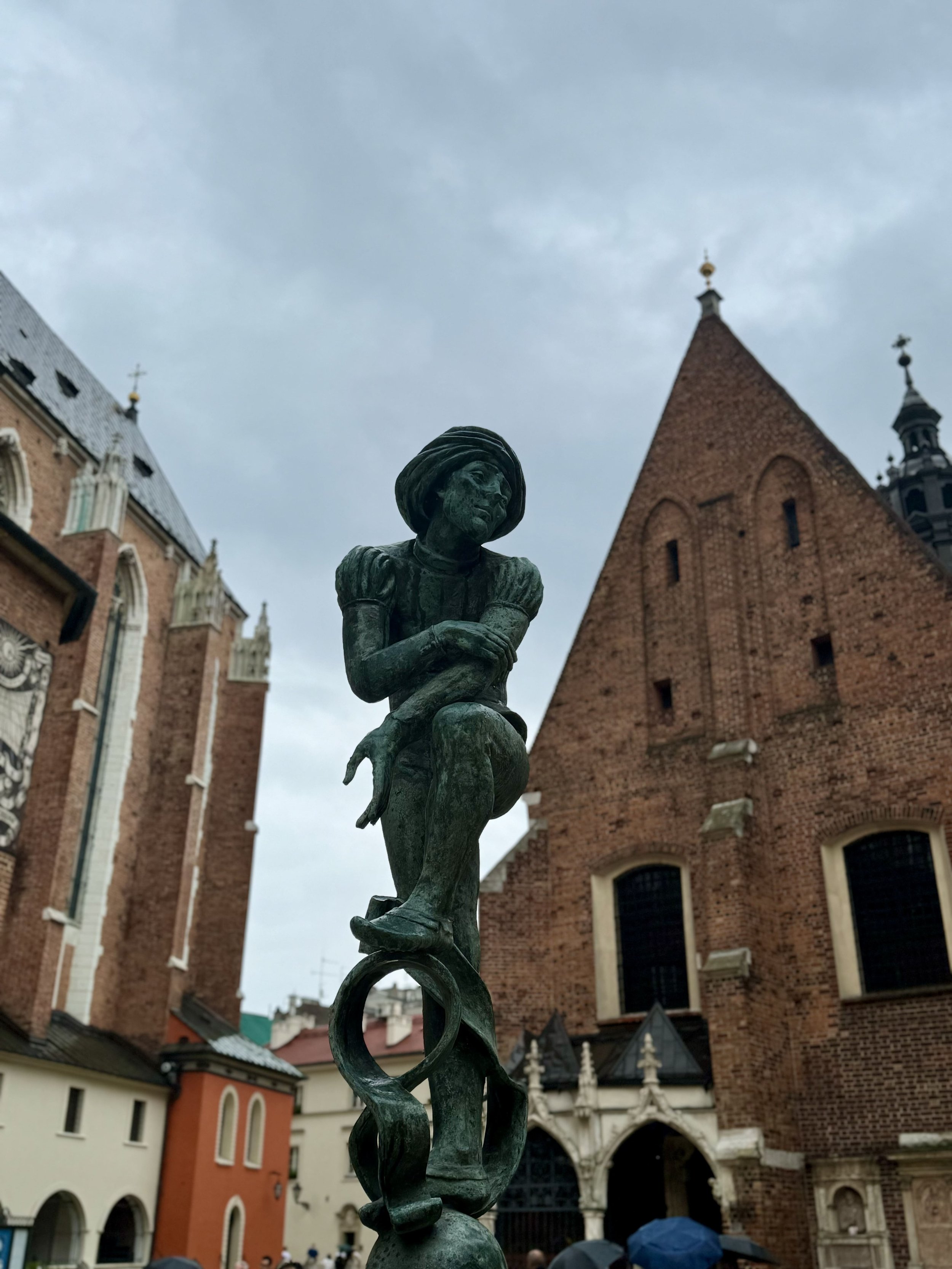Krakow
Contradiction between beauty and sadnessUnlike Warsaw, which was mostly rebuilt after the wars, Krakow looks perhaps more authentic, as many of its buildings were kept in original. It feels more realistic as well. It does not have the number of palaces and majestic residences as Warsaw, but it is pure history, which you can feel just by walking around.
It is in fact the cultural and economic capital of Poland, named after the chief of the Lechita people, Prince Krakus. It was part of the Austrian, French and Austro-Hungarian Empires, of Nazi Germany, and later was part of the communist bloc. Today it is a thriving city, respectful of its history.
It is also the city of Oskar Schindler, the businessman who saved twelve hundred Jews from death, and where John Paul II lived since he was a child, studied theology and was its archbishop in the 60s.
We arrived by train from Warsaw, a journey of about three hours. The compartment carriage in which six of us were traveling was old and looked a bit dreary, as did our fellow passengers.
We had made reservations at a very convenient Mercure Hotel just across the street from Krakow Glowny, the very modern central station, which houses a large shopping mall.
We dropped our bags and set off for the old town, which was only a few minutes' walk away.
We entered Rynek Główny through the 15th century Barbican specifically, through the Gate of St. Florian or Gate of Glory, the ancient 14th century entrance reserved for kings, illustrious visitors and victors of battles. A curious fact, until 1953 a streetcar used to pass underneath it.
Next, a well entertaining and short walk to the Market Square, Rynek Główny, the very center of the city since the 13th century. At each exact hour a trumpeter plays the hejnal, a typical warning melody, from St. Mary's Basilica. It is interrupted in the middle of each note in memory of a guard who was shot in the throat during a Tatar invasion. But the truth is that we, distracted, missed it and could only hear it from afar.
In the center of the huge square is the Cloth Exchange or Sukiennice. A huge building that gave shelter to traders, as there was the trading fair with merchants from the East of the fifteenth century. Today it is the souvenir mecca of Krakow, where tourists pile up for shopping.
Also in the middle of the large esplanade is the Town Hall Tower, the only thing left standing after the 1820 demolition to make the square larger.
We continue along the historic Grodzka Street to the Church of St. Peter and Paul, where the Pantheon of Glories is located. There, in the evenings, concerts are usually offered.
A little further on is the Church of St. Andrew, one of the oldest in the city, from the eleventh century, just before the Wawel Hill. At the top, stands the Royal Castle, with free visit to its gardens, is the heart of Polish nationalism. Built in 1370, it was the royal residence, now the National Museum. There is the Dragon of Wawel, facing the Vistula River.
A fifteen minute walk took us to Kazimierz, the Jewish Quarter. There, we passed by the Basilica of Corpus Christi, in brick Gothic style. Then through the now known Schindler's List Passage, a former plot where a famous scene from Steven Spielberg's movie was filmed.
And then the Jewish Square, Dzielnica Żydowska, where violence during Nazism materialized.
We decided to cross the Vistula River over the Father Bernatek Bridge and visit the Jewish Ghetto.
We passed Apteka pod Orłem, a former pharmacy that procured and provided medicines in hiding to Jews at the beginning of their persecution. Across the street, in Heroes' Square, are the chairs representing those who waited without knowing their tragic fate.
A few blocks away are the former administrative offices of Oskar Schindler. In his Emalia factory, pots and kitchen utensils were produced, which Schindler began to sell to the army, and thus, needing more workers, he saved the lives of some 1200 Jews. He also built a canteen and a clinic inside the factory, bribing Nazi hierarchs to achieve his goal, to the point of ending up almost in ruin. After the war he went to Argentina and set up an otter farm, went bankrupt in 1958 and returned to Poland without his wife.
We returned, retracing our steps back to the Jewish quarter, for dinner. We opted for Restauracja Polska, a sort of a small tavern with typical dishes, decorated as if we were eating at our grandmother's house. We tried the sausage with rye bread and strong mustard. As a main course, we shared the pierogi, a kind of gyoza-style stuffed pasta with potato and cheese, accompanied by a cold beer.
We strolled around the Market Square a bit more before returning to Mercure to rest.
In the morning, a big breakfast with local products, including apple and beet juice, before leaving for Auschwitz II – Birkenau.
The next day it was time to leave for the Czech Republic, but we took advantage of that last available hour for a free day at the Czartoryski Museum, one of the best in Eastern Europe. That brief visit served to enjoy the famous Lady of the Ermine, by Leonardo Da Vinci, as well as a very important art collection.
Having made the most of all that the city has to offer, its harsh history, its beautiful architecture, its famous gastronomy and culture, we said goodbye to the historical capital of Poland.
























